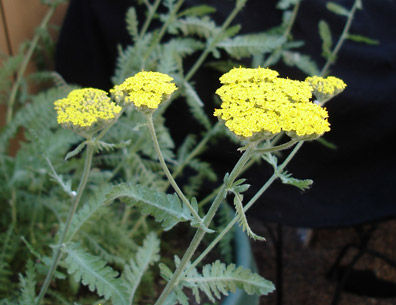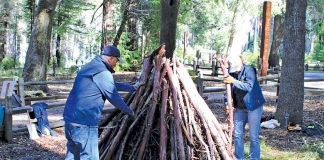
Our summer unofficially kicked off with Memorial Day weekend. What better way to start the season than to spend some time outdoors and do a little gardening?
Plant some new water-efficient plants for color and to attract hummingbirds and butterflies. Afterwards, spread fresh bark or compost to mulch the soil. This insulates and protects shallow roots from the heat of the summer sun. Mulch also slows the evaporation of water from the soil, so it stays moist on dry days.
Some of my favorite plants are survivors — easy to grow with minimal water use once established, while also attracting hummingbirds and butterflies to the garden.
Ceanothus is one plant that does it all. Brilliant blue or stark white flowers in spring provide nectar for both hummers and butterflies. Ceanothus also provides food for butterfly larvae. A new groundcover variety with gold and deep green variegated foliage can bring color to the garden year-round. Growing between 3 and 5 feet wide and about 2 feet tall, this perennial can survive with only occasional summer water.
Everyone should have some lavender in the garden. Hummingbirds and butterflies both favor this plant, and there are new introductions every year from growers. Elegance Purple forms a bushy, compact mound with sensational purple flowers in early summer. Goodwin Creek is an old standby that blooms from spring to late fall with deep violet-blue flowers. For midsummer blooms, plant Grosso, a widely planted commercial variety in France and Italy. It’s possibly the most fragrant lavender of all. Spanish lavender blooms from spring into summer if sheared. By planting an assortment of lavenders, you can have a succession of flowers throughout the season.
Penstemon also lures hummingbirds and butterflies to the garden. They come in a wide range of colors and varieties from native species to garden hybrids.
Another long-blooming, tough plant is Moonshine achillea (yarrow). Butterflies love to alight on their yellow, flat landing pads. The dense flower clusters also make good cutting flowers, and the gray-green foliage blends with all colors in the garden. Yarrow plants need only routine care once established. They can take some watering, although they endure drought once established. Cut them back after bloom and divide when clumps get crowded.
There are so many salvias to choose from, and all are great additions to a tough-love garden. Autumn sage blooms summer through fall in colors ranging from deep purple through true red to rose, pink and white. Purple Pastel is especially beautiful, covering plants between 3 and 4 feet tall with blossoms filled with nectar for hummingbirds and butterflies.
Those who seek true blue flowers for their gardens might try planting salvia chamaedryoides. This elegant front-of-the-border plant has silvery foliage, which sets off the brilliant blue flowers. Its heaviest bloom is in late spring and fall, and Deadheading encourages a second bloom. This salvia is drought-tolerant but blooms longer and better with a little summer water.
Three more un-thirsty bloomers that even beginner gardens can’t kill are gaura, coreopsis and verbena. All attract hummingbirds. Coreopsis also make good cut flowers.
To learn more about drought-tolerant plants and techniques for reducing water use in existing gardens, Scotts Valley Recreation is offering a free class June 13. For information: 438-3251.
Jan Nelson, a California certified nursery professional at Plant Works in Ben Lomond, will answer questions about gardening in the Santa Cruz Mountains. E-mail her at ja******@*ol.com.










